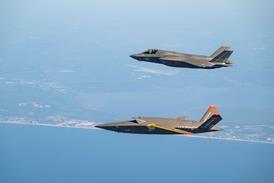Final report highlights four ‘active’ and four ‘latent’ failures that led to accident
The final report on the August 2005 crash of a Helios Airways Boeing 737-300 near Athens, Greece – due for release this week – details four “active” and four “latent” failures that caused the accident, says Hellenic Air Accident Investigation and Aviation Safety Board head Akrivos Tsolakis.
The report says the accident occurred because the pilots became unconscious from hypoxia when the aircraft did not pressurise during its climb out of Larnaca airport, Cyprus. Tsolakis lists the “active failures” as:
■ failure of the flightcrew to recognise during pre-start checks that the pressurisation control panel master switch was set to manual rather than automatic;
■ failure of the pilots to recognise the audible alert indicating that the aircraft was not pressurising as it climbed;
■ flightcrew unconsciousness resulting from hypoxia, leading to the loss of their ability to manage the flight;
■ engine flame-out resulting from fuel exhaustion.
The aircraft, on a 14 August 2005 charter flight to Athens with six crew and 115 passengers, crashed at Grammatikos just short of its destination, killing everyone on board.
Tsolakis says he has also identified four “latent” failures – situations that predisposed the aircraft to an accident at some time in the future – as factors in the Helios crash. These include:
■ management and organisational deficiencies in the airline itself;
■ inadequate exercise of airline safety oversight by Cypriot aviation authorities;
■ failure by Boeing to modify its pressurisation control system, despite there having been numerous occurrences in which 737s failed to pressurise for similar reasons to those that caused the Helios accident;
■ the inadequate exercise of crew resource management (CRM) by the crew, as the airline had not trained these pilots in CRM skills.
The chief investigator, aware that there has been considerable media debate in Cyprus about the fact that maintenance engineers left the pressurisation control in the “manual” setting after conducting pressurisation checks on the ground, says he does not consider that this was a causal factor in the accident.
Source: Flight International























